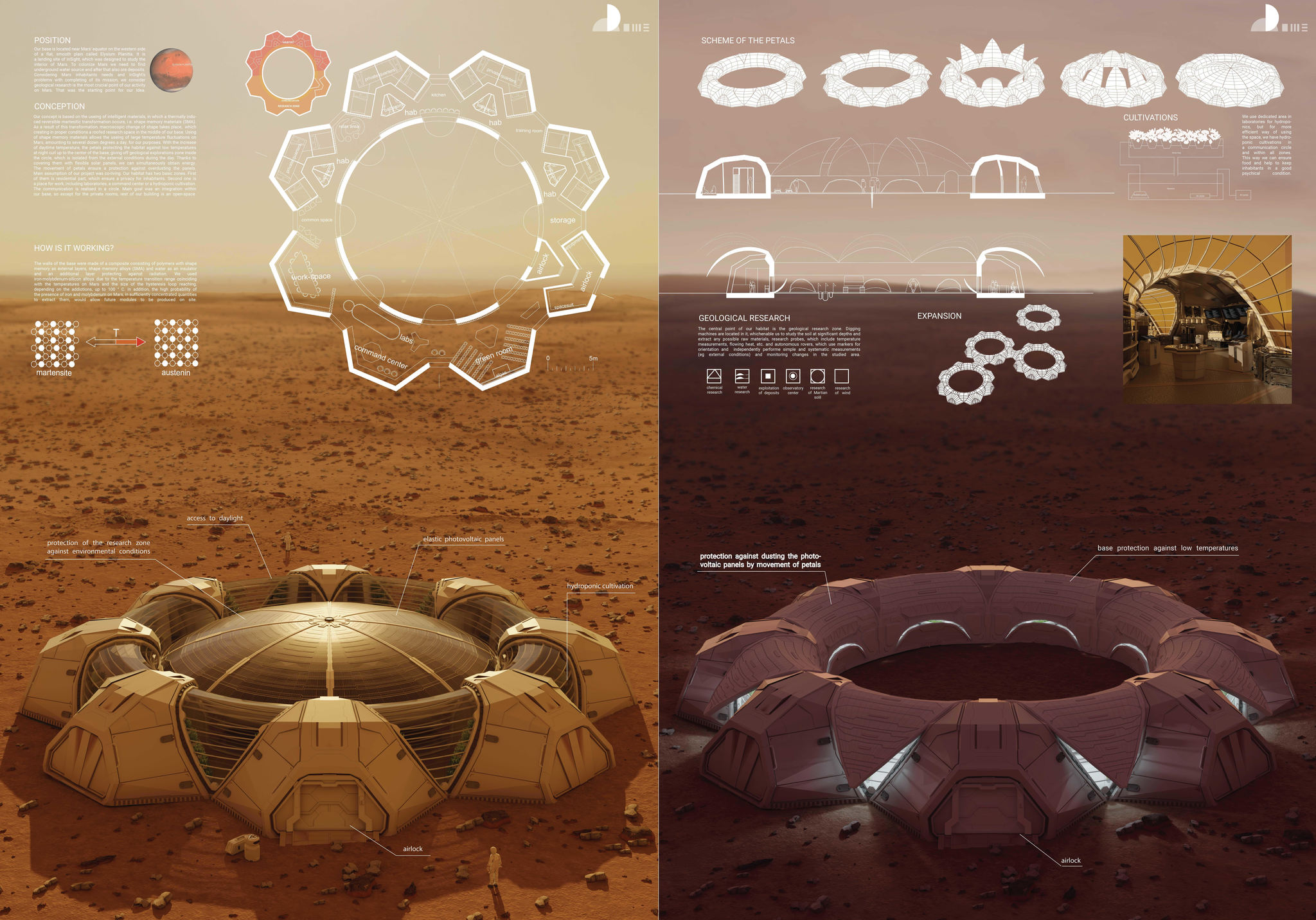Dome is the idea of a Martian base using shape memory materials. The concept takes benefit of the significant daily temperature amplitude on Mars, which reaches tens of degrees. Under the influence of temperature changes during the day parts of the dome in the shape of petals bend towards the center of the base, giving access to natural light and at the same time creating a dome, which allows to obtain additional space protected from radiation. At night, however, the petals return to their place and become an additional layer insulating the interior of the base from low nighttime temperatures.

